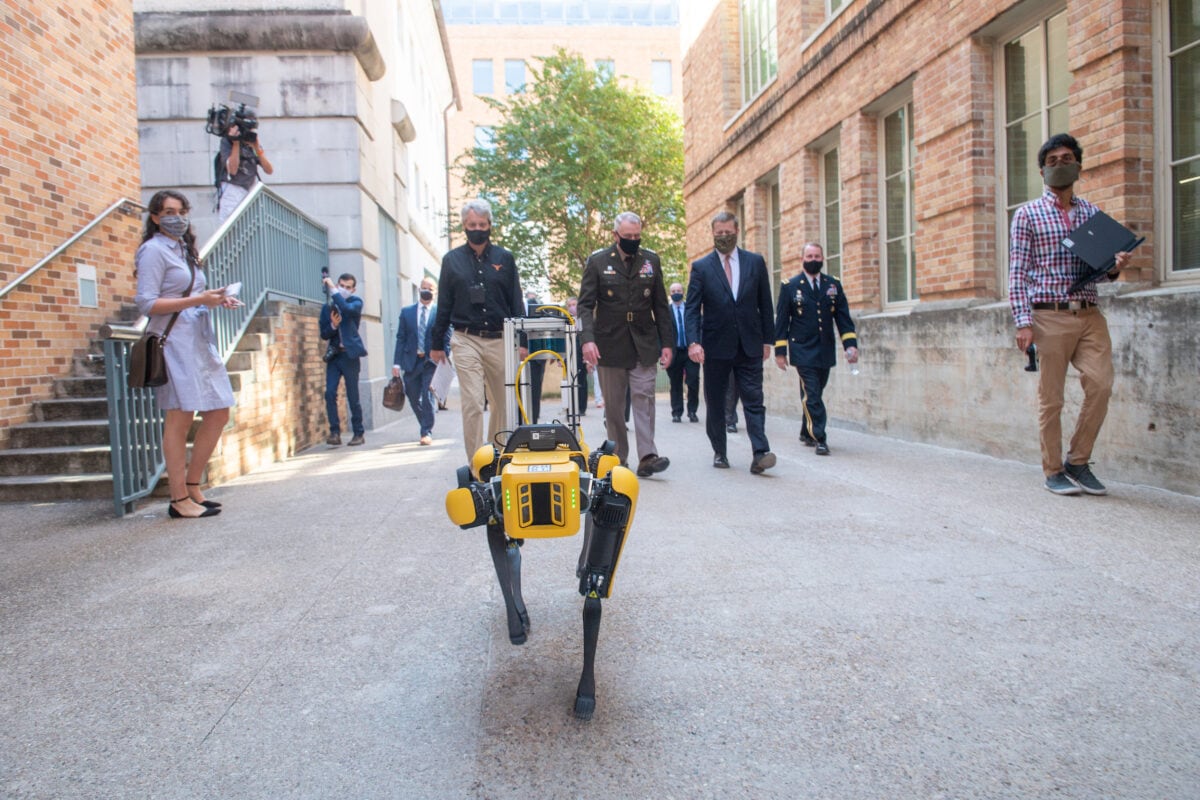WASHINGTON — The U.S. Army command that oversees modernization has been without a leader for more than nine months after officials worried the front-runner for the job would not get approval from Congress because he allegedly had reservations about deploying the National Guard during the Jan. 6 attacks on the Capitol.
Several current and former Army personnel, speaking on background because they were not authorized to discuss personnel matters, told Defense News that Lt. Gen. Walter Piatt was considered for the position.
But Army leaders worried the controversy over how Piatt was portrayed in the lead-up to deploying the National Guard would hinder his chances of earning a Senate confirmation.
RELATED

Piatt reportedly said on a conference call on Jan. 6 that he didn’t like the optics of the Guard standing in a police line in front of the Capitol building, according to the Washington Post. But Piatt has denied this and said repeatedly that Army leaders did not hesitate to escalate the request to deploy the Guard.
The four-year-old Army Futures Command was led by its first chief, Gen. Mike Murray, until early December 2021. Since then, Lt. Gen. James Richardson, Murray’s deputy, has served as acting commander.
Army Secretary Christine Wormuth told Defense News in a recent interview she’s “very hopeful that we will see a nominee going to the Senate in short order.”
Since its inception, the command has been in charge of rapidly developing capability to keep the Army ahead of China and Russia. The Army established the office, with headquarters in Austin, Texas, to be disruptive and break a pattern of failure in the service’s efforts to field new weapon systems.
But the lack of a confirmed leader has led to uncertainty and a number of personnel are now planning to depart or have already left, according to sources within Army Futures Command who spoke on the condition of anonymity due to the sensitivity of the topic. That’s a higher level of turnover in recent years. No senior Army official has come to the command since Murray’s retirement in December 2021.
Now, these sources say, the Army is likely to nominate Lt. Gen. James Rainey, the G-3/5/7 chief in charge of Army strategic operations at the Pentagon, to lead Army Futures Command.
To date, the Army has not formally nominated anyone for the role.
In the meantime, Wormuth said, Richardson is successfully running Army Futures Command.
But there’s been a noticeable drop-off in public engagements and appearances by the acting chief. A source in Austin, who regularly works with the organization and was granted anonymity because of concern over their business relationships, said the command’s leadership is less frequently engaging with the community.
The vacancy comes as the command tries to achieve significant milestones in many of its priority modernization programs. It is aiming to get 24 different signature systems into soldiers’ hands in one form or another by the end of fiscal 2023.
“There is no substitute for a confirmed four-star commander when the command deals with the Pentagon officials, industry and the public,” Thomas Spoehr, a former Army official who now works at the Heritage Foundation, told Defense News. “People know four-star generals are a rare breed,” Spoehr said.
Jen Judson is an award-winning journalist covering land warfare for Defense News. She has also worked for Politico and Inside Defense. She holds a Master of Science degree in journalism from Boston University and a Bachelor of Arts degree from Kenyon College.








